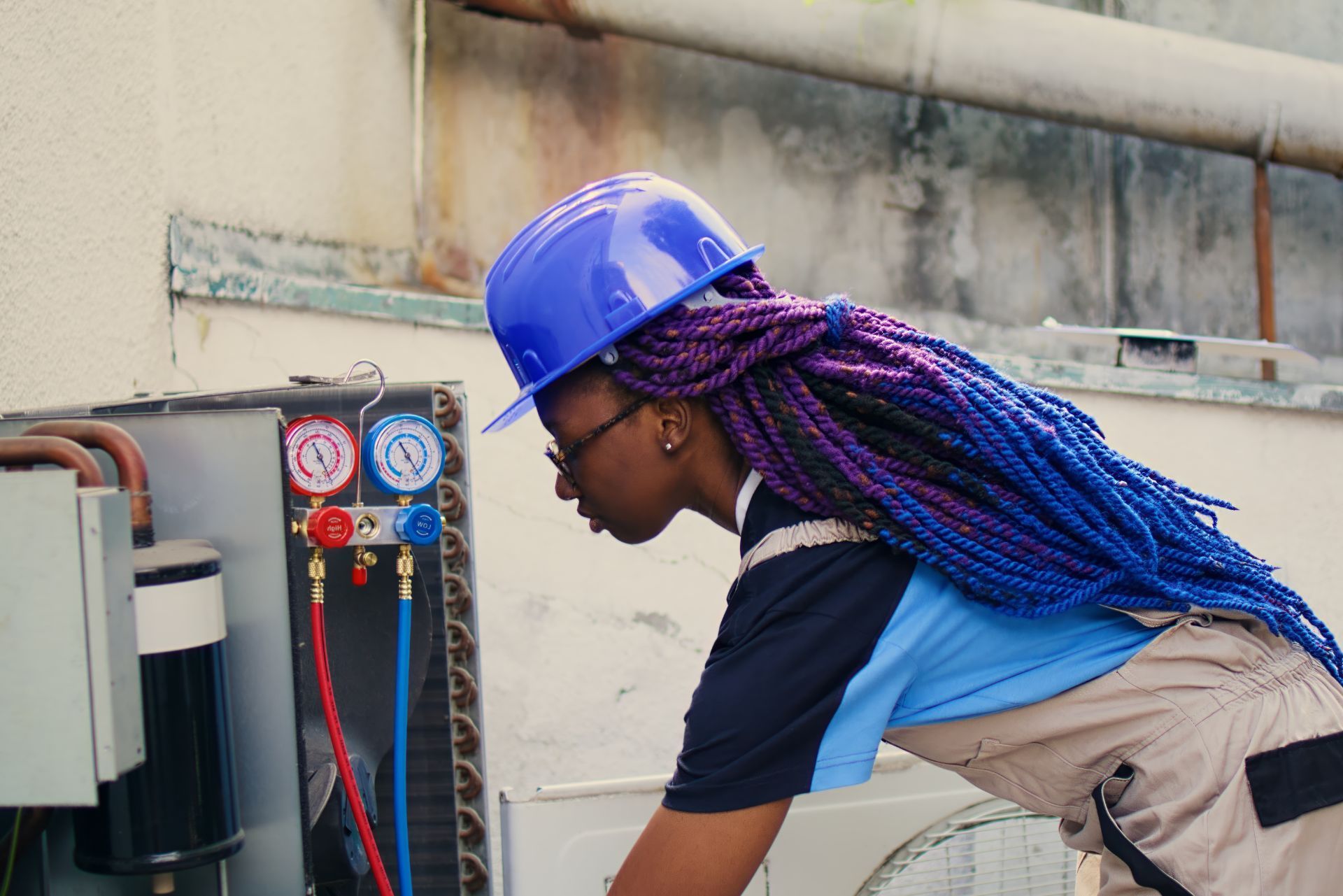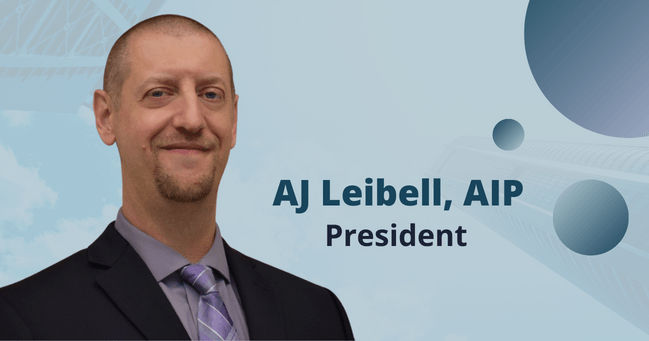Florida HVAC Contractor Insurance
8:30am - 5:00pm Mon-Fri
Will Reply in 15min*
Top Recommended Business Insurance Policies

Index
Florida’s HVAC Industry Landscape and Regulatory Climate
Core Insurance Policies Every Florida HVAC Contractor Should Carry
Specialized Coverage Considerations in the Sunshine State
Legal Requirements, Certificates, and Compliance Pitfalls
Cost Factors and Premium Benchmarks
Real-World Claim Scenarios and Lessons Learned
Risk-Management Moves That Cut Losses and Premiums
Choosing the Right Insurance Partner
Final Thoughts: Securing the Future of Florida HVAC Businesses
Contact Us
Phone
Location
6900 Tavistock Lakes Blvd, Suite 400, Orlando FL 32827
Air-conditioning keeps Florida livable. From sprawling resorts on Miami Beach to single-family homes in Tampa, nearly every building wrestles with the Sunshine State’s relentless heat and humidity. Behind each cool lobby or crisp bedroom is an HVAC contractor juggling ladders, refrigerant lines, sheet-metal ducts, and strict building codes. With so much riding on their shoulders, proper insurance is not a luxury—it is a business necessity. The guide that follows unpacks the policies, laws, costs, and risk-mitigation strategies that matter most to HVAC companies operating anywhere from the Panhandle to Key West.
Florida’s HVAC Industry Landscape and Regulatory Climate
Florida currently licenses more than 16,000 certified and registered HVAC contracting entities, according to the Department of Business & Professional Regulation (DBPR). Between booming construction, record migration, and one of the nation’s highest rates of heat-pump installations, the demand for heating, ventilation, and air-conditioning services has rarely been higher. Yet intense competition and a volatile weather pattern—tropical storms, lightning, and 90-degree days year-round—create a risk environment unlike any other state.
State law classifies HVAC work under “mechanical contracting,” governed by Florida Statutes Chapter 489 and Florida Administrative Code Rule 61G4. Violations of these standards can trigger fines, stop-work orders, or even criminal penalties. Insurance does not replace compliance, but it cushions the financial blow when an accident, claim, or regulatory action occurs. As the industry evolves, contractors are increasingly investing in training and certification programs to ensure compliance and enhance their competitive edge, recognizing that staying informed about regulatory changes is crucial for long-term success.
Because HVAC work often involves refrigerants and combustible fuels, contractors also face federal rules like the U.S. Environmental Protection Agency’s Section 608 refrigerant-handling certification and Occupational Safety and Health Administration (OSHA) safety requirements. Satisfying each layer of regulation adds cost, but neglecting one can shut down a project or jeopardize a license. In addition, the rising emphasis on environmentally friendly practices has led many contractors to explore alternative refrigerants and energy-efficient technologies, which not only comply with regulations but also appeal to eco-conscious consumers.
Key Market Statistics
The Bureau of Labor Statistics counts roughly 35,000 HVAC technicians statewide, earning an average wage just above $25 per hour. Residential service represents about 58 % of total HVAC revenue in Florida, commercial new construction 23 %, and government or institutional jobs, 19 %. The state’s projected HVAC employment growth through 2030 is 13 %, well above the national average of 5 %. This growth is fueled by an expanding population and increasing demand for energy-efficient systems, prompting many technicians to pursue specialized training in emerging technologies such as smart thermostats and home automation systems.
Unique Environmental Exposures
High humidity accelerates corrosion of tools, copper tubing, and electrical boards. Annual hurricane probability hovers near 40 % in many coastal counties, raising the stakes for
windstorm damage and job-site delays. Salt air and lightning strikes further heighten equipment losses, while mold growth—often triggered by HVAC malfunctions—can spark expensive liability claims. To combat these unique challenges, many HVAC companies are investing in advanced materials and protective coatings designed to withstand Florida's harsh environmental conditions, thereby extending the lifespan of their installations and reducing the frequency of service calls. Furthermore, the integration of smart technology in HVAC systems not only enhances efficiency but also allows for real-time monitoring, enabling contractors to address potential issues before they escalate into costly repairs.

Core Insurance Policies Every Florida HVAC Contractor Should Carry
An HVAC firm’s insurance portfolio typically starts with a set of “core” policies that protect against the most common legal and financial exposures. Skipping any one of these can leave a dangerous gap.
The following summary outlines coverage basics, policy limits commonly purchased in Florida, and why each matters to a contractor’s survival.
General Li ability
Often required by clients and building owners, general liability (GL) responds when property damage or bodily injury arises from a contractor’s operations. A refrigerant leak that destroys freshly painted walls, an unsecured ladder that injures a tenant, or a cracked condensation line that spawns mold all fall under this umbrella. Most Florida HVAC firms purchase limits of $1 million per occurrence and $2 million aggregate, though projects with public entities or high-rise condos frequently demand higher limits.
Workers’ Compensation
State statute mandates workers’ compensation for any contractor with at least one employee. This policy pays medical expenses and lost wages if a technician strains a back moving an air handler or suffers heatstroke in a poorly ventilated attic. Florida’s construction class code 5537 (HVAC installation) currently shows an average base rate of roughly $7.20 per $100 in payroll, but strong safety programs and a favorable experience modification factor can cut that figure in half.
Commercial Auto
Whether the fleet consists of a single pickup or thirty fully wrapped service vans, commercial auto protects against accidents, theft, and hurricane damage. The policy can provide hired and non-owned auto coverage, valuable when employees rent vehicles to haul parts during peak season. Bodily-injury liability limits of $1 million combined single limit (CSL) remain common, though some carriers now recommend $2 million because of rising jury awards.
Contractor’s Equipment (Inland Marine)
Tools disappear, copper gets stolen, and lift compressors roll off forklifts. An inland-marine form—often called a “tool floater”—covers mobile equipment on and off the primary premises. Flood and windstorm sub-limits deserve careful review, especially in South Florida, where a single hurricane can wipe out a warehouse full of new rooftop units worth six figures each.
Professional (Errors & Omissions) Liability
Design-build contracts blur the line between installed work and professional advice. If a wrong calculation leads to undersized ductwork and a lawsuit over perpetual humidity, professional liability steps in. While not yet standard for every HVAC firm, carriers increasingly bundle a modest $250,000 limit with GL policies to plug this exposure.
Cyber Liability
Modern HVAC control systems rely on Wi-Fi, Bluetooth, and cloud-based monitoring. Breaching an internet-connected thermostat can create both privacy and property-damage claims. Cyber liability covers data breach costs, ransomware payments, and even third-party bodily injury if hacked controls shut down a refrigeration system in a medical lab.
Specialized Coverage Considerations in the Sunshine State
Beyond the foundation outlined above, Florida presents quirks that merit tailored endorsements or standalone policies. Under-estimating these nuances is a recipe for surprise out-of-pocket bills after a storm or claim.
Windstorm and Named-Storm Deductibles
Many commercial property or inland-marine policies apply a separate percentage deductible, often 2–5 % of insured value, for “named storms.” On a $500,000 inventory schedule, a 5 % deductible is $25,000—enough to strain cash flow. Contractors can sometimes buy “deductible buy-down” coverage to soften the blow.
Flood Insurance for Equipment Yards
Standard property policies exclude flood. With 41 % of Florida’s landmass designated as Special Flood Hazard Area by FEMA, storing equipment at ground level is risky. A National Flood Insurance Program (NFIP) policy covers structures up to $500,000, but for higher values, private-market flood layers are available.
Mold and Bacteria Liability
Mold thrives in humid crawl spaces when HVAC systems fail or drain pans overflow. Most GL policies exclude fungi-related damages beyond a small sub-limit unless contractors buy a mold endorsement. Given Florida’s prolific mold litigation—up 18 % in the past five years—upgrading limits to at least $250,000 is recommended.
Installation Floater for In-Progress Work
An installation floater covers materials after they leave the warehouse but before final acceptance by the property owner. If a tropical storm floods a condo lobby the night before technicians finish a chilled-water line, the floater pays for replacement materials and labor so the job can resume quickly.
Legal Requirements, Certificates, and Compliance Pitfalls
Insurance is intertwined with licensing in Florida. Contractors frequently lose jobs, or even their licenses, when certificates lapse or limits fall below statutory minimums. Understanding the regulatory text avoids frantic last-minute scrambling.
The Construction Industry Licensing Board (CILB) mandates proof of GL and property-damage coverage as part of the initial HVAC license application and each renewal. Workers’ compensation compliance audits, performed by the Division of Workers’ Compensation, regularly target mechanical trades due to historically high claim volumes.
Statutory Minimums at a Glance
• General Liability: $100,000 bodily injury per person, $300,000 per occurrence, plus $50,000 property-damage liability (or a combined $300,000 CSL).• Workers’ Compensation: Required for any employee payroll, with exemptions allowed only for up to three corporate officers owning at least 10 % each.• Commercial Auto: Florida’s “motor carrier” law requires $750,000 CSA for vehicles over 26,000 lbs; smaller service vans fall under the $10,000 PIP/PD standard, but most clients require higher limits.
Certificates of Insurance (COIs) Best Practices
Project managers increasingly rely on real-time certificate portals such as myCOI or Certificial. Submitting a generic Acord 25 form with no additional insured endorsement will lead to rejection. Florida’s “anti-indemnity” statute (F.S. 725.06) bars broad form hold-harmless but still permits additional insured endorsements tied to vicarious liability. Using ISO CG 20 10 11 85 or equivalent wording remains the norm.

Cost Factors and Premium Benchmarks
Insurance costs vary wildly between a two-technician shop in Ocala and a 200-employee mechanical contractor in Fort Lauderdale. Carriers analyze dozens of variables before quoting, but certain levers consistently steer premiums in or out of budget.
Primary Rating Variables
1. Payroll and Revenue: Workers’ compensation and GL base rates apply per $100 of payroll or gross receipts. Doubling revenue roughly doubles premium, all else equal.2. Loss History: Claims within the past three to five years raise red flags. A single open workers’ comp shoulder injury can add 0.20 to an experience mod, equating to tens of thousands in extra costs.3. Territory: Zip codes east of I-95 and south of Sarasota typically carry higher windstorm surcharges.4. Fleet Composition: Technicians driving personal vehicles on company business often raise hired/non-owned auto pricing.5. Trade Mix: Pure service work is cheaper than new-construction duct installation 40 stories high.
Average Premium Ranges in 2024
• Small Residential Service Firm (Revenue $750k, 4 Techs): General Liability – $4,000 to $6,500 annual Workers’ Compensation – $14,000 to $18,000 annual Commercial Auto (2 vans) – $3,200 to $4,500 annual• Mid-Size Commercial Contractor (Revenue $5 M, 25 Techs): General Liability – $28,000 to $40,000 annual Workers’ Compensation – $90,000 to $130,000 annual Commercial Auto (15 vehicles) – $22,000 to $30,000 annual
Real-World Claim Scenarios and Lessons Learned
Abstract policy language becomes crystal clear when an actual loss occurs. The following Florida-centric examples reveal how coverage responds—and how it sometimes fails.
Copper Theft at a Jacksonville Storage Yard
Thieves cut through a chain-link fence and stole $48,000 in copper linesets and three condensers. The inland-marine policy carried a $100,000 limit but excluded theft from unsecured yards between 7 p.m. and 6 a.m. Because motion-sensor lights were installed but no guard service operated, the claim payout was reduced by 40 % under a “protective safeguards” clause. Lesson: confirm yard-storage conditions match policy requirements.
Mold Allegations After a Miami Condo Retrofit
Residents claimed that inadequate condensate drainage caused black mold in 14 units, demanding $1.2 million in remediation and loss of use. The contractor had a fungi sub-limit of $50,000 per occurrence. The GL carrier paid that limit, but excess costs came from the firm’s retained earnings and a negotiated payment plan. Lesson: upgrade mold limits or buy standalone environmental liability for humid-zone projects.
Hurricane Ian Fleet Losses
When Hurricane Ian swept across Southwest Florida, wind-driven debris shattered windshields and floodwaters totaled eight vans. Each vehicle carried only $25,000 stated value despite market replacement cost of $40,000. The resulting $120,000 gap slowed operations for months. Lesson: review stated values annually and add “hired auto physical damage” for rental replacements after catastrophes.
Risk-Management Moves That Cut Losses and Premiums
Insurance is reactive by nature, but proactive risk management trims claims and earns carrier discounts. HVAC contractors embracing the following tactics often see double-digit savings within two policy terms.
Formal Safety Programs
Written programs covering ladder safety, lockout-tagout, refrigerant handling, heat-stress mitigation, and electrical hazards can reduce workers’ comp base rates by up to 10 % through scheduled credits. Carriers favor firms that use digital checklists and hold “toolbox talks” at least weekly.
Fleet Telematics
GPS tracking and dashcams provide speed alerts, braking data, and accident footage. According to a 2023 study by the Insurance Information Institute, commercial fleets using telematics report 22 % fewer at-fault collisions and a 12 % reduction in auto premiums after two years of continuous data sharing.
Certificate Review and Contract Language
A robust subcontract agreement outlines insurance requirements, waiver-of-subrogation, and primary/non-contributory language. Contractors that vet certificates before allowing subs on site close off risk transfer gaps—often the root cause of costly litigation when something goes wrong.
Equipment Maintenance and Calibration
Regular thermographic inspections of panels and adherence to manufacturer service intervals prevent mid-project breakdowns. Keeping detailed logs supports inland-marine claims by proving that negligence or lack of upkeep was not a contributing factor to equipment failure.
Choosing the Right Insurance Partner
The complexity and fluidity of Florida’s insurance market make broker selection almost as crucial as policy selection. The wrong partner could overlook an exclusion that later sinks a business.
Independent Agent vs. Direct-Writer
Independent agents access multiple carriers, tailoring packages to unique risk profiles. Direct-writer companies sell only their own policies, sometimes at a discount but with less flexibility. For HVAC firms juggling property, auto, and specialized liability needs, an independent often secures the broadest protection.
Carrier Financial Strength and Claims Service
An A- or better rating from AM Best signifies solid reserves—critical after a statewide catastrophe strains claims budgets. Beyond the rating, examine average claims resolution time and adjuster turnover. Tech-savvy carriers offering mobile apps for photo uploads and digital loss tracking shorten repair cycles, an advantage during peak season.
Value-Added Services
Many insurers now provide complimentary risk-control inspections, OSHA training modules, and cyber-security assessments. Weigh these extras; they can save thousands in consultant fees and directly lower loss frequency.
Final Thoughts: Securing the Future of Florida HVAC Businesses
Florida’s HVAC sector sits at the intersection of booming development, sweltering climate, and evolving technology. Insurance, when thoughtfully structured, becomes a strategic asset rather than a line-item expense. By combining mandated coverages—general liability, workers’ compensation, and commercial auto—with specialized endorsements for mold, flood, and cyber threats, contractors build a shield resilient enough to weather everything from everyday mishaps to Category 4 hurricanes.
Regular policy reviews, aggressive risk management, and collaboration with experienced insurance professionals round out the formula. With these elements in place, Florida HVAC contractors can focus on delivering cool comfort to millions of residents and tourists, confident that their businesses remain protected against the hottest risks the Sunshine State can summon.








